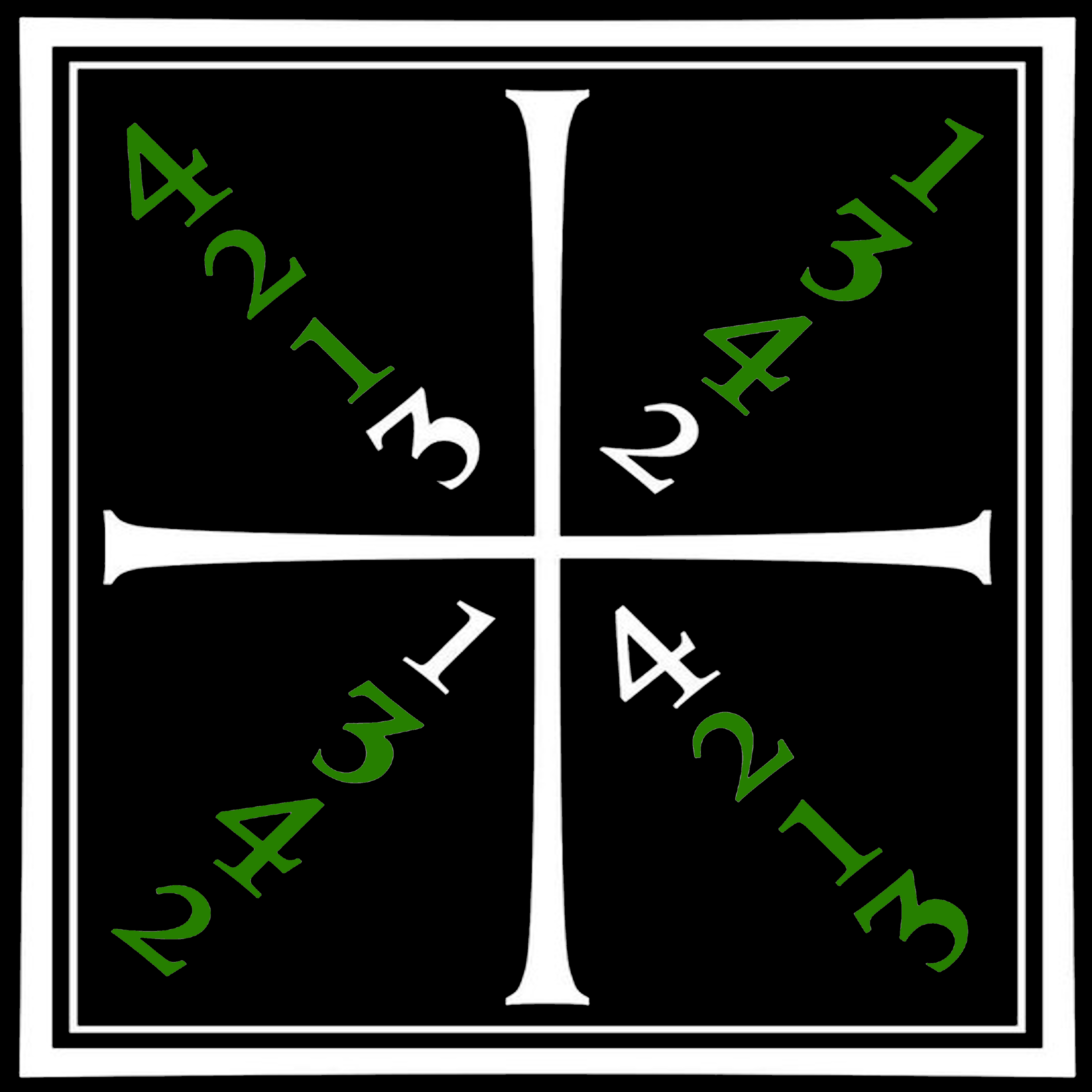Fechter I
(→Deceptions/entries) |
(→Basic Information) |
||
| Line 6: | Line 6: | ||
=== [[Basic Information]] === | === [[Basic Information]] === | ||
[[File:Meyersquare_fechter1_alt.png|thumb]] | [[File:Meyersquare_fechter1_alt.png|thumb]] | ||
| − | * [[ | + | * 4 [[Openings]] |
* [[Basic Information#Parts of the weapon|Parts of the weapon]] | * [[Basic Information#Parts of the weapon|Parts of the weapon]] | ||
* [[Gripping the Longsword]] | * [[Gripping the Longsword]] | ||
Revision as of 01:21, 8 June 2017
By the time the student is ready for the level of Fechter they should have already demonstrated good form when performing techniques in a slower and more controlled manner. For Fechter 1, however, they should be performing techniques with more intent without sacrificing control.
For the Fechter I grading students should demonstrate the techniques in protective equipment (at least using gloves and a mask), first performing the technique slowly, then at high speed.
Contents
|
Theory
Basic Information
Engagement Theory
Stages of the Exchange
- Explain and Demonstrate Using Example Device 126r.1
Initiative
Three Types of Strike
Longsword
Posture
Footwork
Guards/Postures
Principal Guards
Secondary Guards
Low Side Guards
- Wechsel (change)
- Nebenhut (near guard)
- Schranckhut (barrier guard)
High Side Guards
Centreline Guards
Hanging Guards
Attacks
Principal Cuts
Cuts should be performed with speed and intent.
Secondary Cuts
Secondary cuts should be performed at higher (not full) speed, while maintaining form and balance. They need not be as fast or agressive as the principal cuts.
Crooked cut variations:
False edge cuts which parry:
- Schielhauw (squinting strike)
- Glutzhauw (clashing strike)
Thwart cut variations:
- Zwerch (thwart)
- Kneichelhauw (wrist strike)
Plunging cut variations:
- Sturtzhauw (plunge strike)
- Kronhauw ( crown strike)
Cuts with winding:
- Windthauw (winding strike)
- Blendthauw (blind strike)
Changing strike variations:
- Wechselhauw (change strike)
- Prellhauw (rebound strike)
On-Point Thrusts
Meisterhauw
Demonstrate the master cuts using their advanced movements and proper mechanics.
Cutting to the Openings
Cutting with Sharps
NOTE: This requirement is subject to insurance and legal obligations.
- Attend at least 1 cutting session with sharps
- Demonstrate the ability to execute the principle cuts with good edge alignment
Handworks
Handworks should be carried out with intent, though need not be at full speed.
Students should be able to demonstrate the two types of parrying:
- Parrying and striking in a single movement (eg. Zwerch)
- Parrying and striking as separate movements (eg. Hanging parry set)
Students should be able to dynamically describe/demonstrate the following handworks:
- Anbinden (Binding)
- Bleiben (Remaining)
- Fulen (Feeling)
- Nachreisen (Chasing)
- Schneiden (Slicing)
- Umbschlagen (Striking around)
- Verfuhren (Deceiving)
- Ablauffen (Running off)
- Absetzen (Setting off)
- Verfliegen (Flitting/Flying off)
- Zucken (Pulling)
- Doplieren (Doubling)
- Verkehren (Reversing)
- Umbschnappen (Snapping Around)
- Fehlen (Failing)
- Zirckel (Circle)
- Rinde (Looping)
- Winden (Winding)
- Wechseln (Changing)
- Abschneiden (Slicing Off)
- Hendtrucken (Pressing Hands)
- Verschieben (Sliding)
- Hengen (Hanging)
- Außreissen (Wrenching Out)
- Sperren (Barring)
- Verstullen (Forestalling/Blocking)
- Ubergreiffen (Overgripping)
- Einlauffen (Running in)
Parrying Sets
Verfuhren (deceiving)
- Verfliegen (Flying off)
- Fehlen (Failing)
- Ablauffen (Running off)
- Zucken (Pulling)
- Durchwechseln (Changing Through)
- Zirckel (the Circle)
Meyer's Devices/Plays
- Attacking to the Openings Device 127v.1
- Explain and Demonstrate Example Device 126r.1
Fencing Free-play
The students shall demonstrate their ability to fence using the principles from Meyer's system in the following conditions:
- Fight a 2 minute bout at slow speed showing control and flow
- Fight a 2 minute bout at high speed using fechtschule rules
- Fight a 2 minute bout at high speed using tournament rules
- Referee a 2 minute bout between peers
Wrestling & Dagger
All techniques should show control and cooperation between participants - injuries are not what we're looking for.
Application
Dagger Guards
Applications
- Parry from High Guard 1
- Parry from High Guard 2
- Parry from High Guard 3
- Parry from Low Guard 1
- Parry from Low Guard 2
- Casting opponent backward against a dagger attack.
- Dagger Technique 9 - Another takedown
- Joint locking techniques - unarmed and armed
Polearms (Optional?)
Guards
- Oberhut (High/over guard - including thrusting variation)
- Mittelhut (Middle guard/straight parrying, also field guard variation)
- Unterhut (Low/under guard)
- Steurhut (Rudder guard - both variations)
